Story by Graham Gauld
Period photos courtesy ot Cesare Martinengo
From the Archives, August 8, 2012
Regular readers may remember my May 2012 article about the Monaco Historics in which I mentioned meeting Cesare Martinengo, whose father Franco was a typical Italian “Gentleman Driver” throughout the 1940s and ’50s. This sounded interesting and I had to find out more. Cesare then brought his scrapbooks to me in the South of France and I spent a fascinating day going back in time when people raced for the fun of it and enjoyed racing with their friends.
Cesare Martinengo, however, did some racing himself, mainly with small Italian sports cars. It was no surprise that thanks to his father’s long-time friendship with Elio Zagato, Cesare raced a double bubble Fiat 750 Zagato. (In the lead photo, Elio, left, with Franco Martinengo stand next to their Fiat 1100 Zagatos.)
The Martinengo Cesaresco family in Milan goes back more than five centuries. Cesare’s sister still lives in one of the grand family homes outside Milan. Their father, Francisco (Franco) Martinengo was born in 1912, obtained his first racing license in 1937 and immediately started to run his Fiat 1500 sedan in small hill climb events. This 1500 model was the first production Fiat sedan to feature an “aerodynamic” hood, rather than a straight up and down radiator. It was an early use of a wind tunnel for a production sedan and came out in 1935. The model was introduced at the 1935 Milan Motor Show and created something of a sensation. It had an ohv 6 cylinder engine and a tubular (Fiat’s description) backbone chassis. The car continued in the Fiat range until 1948 and around 42,500 of them were built.
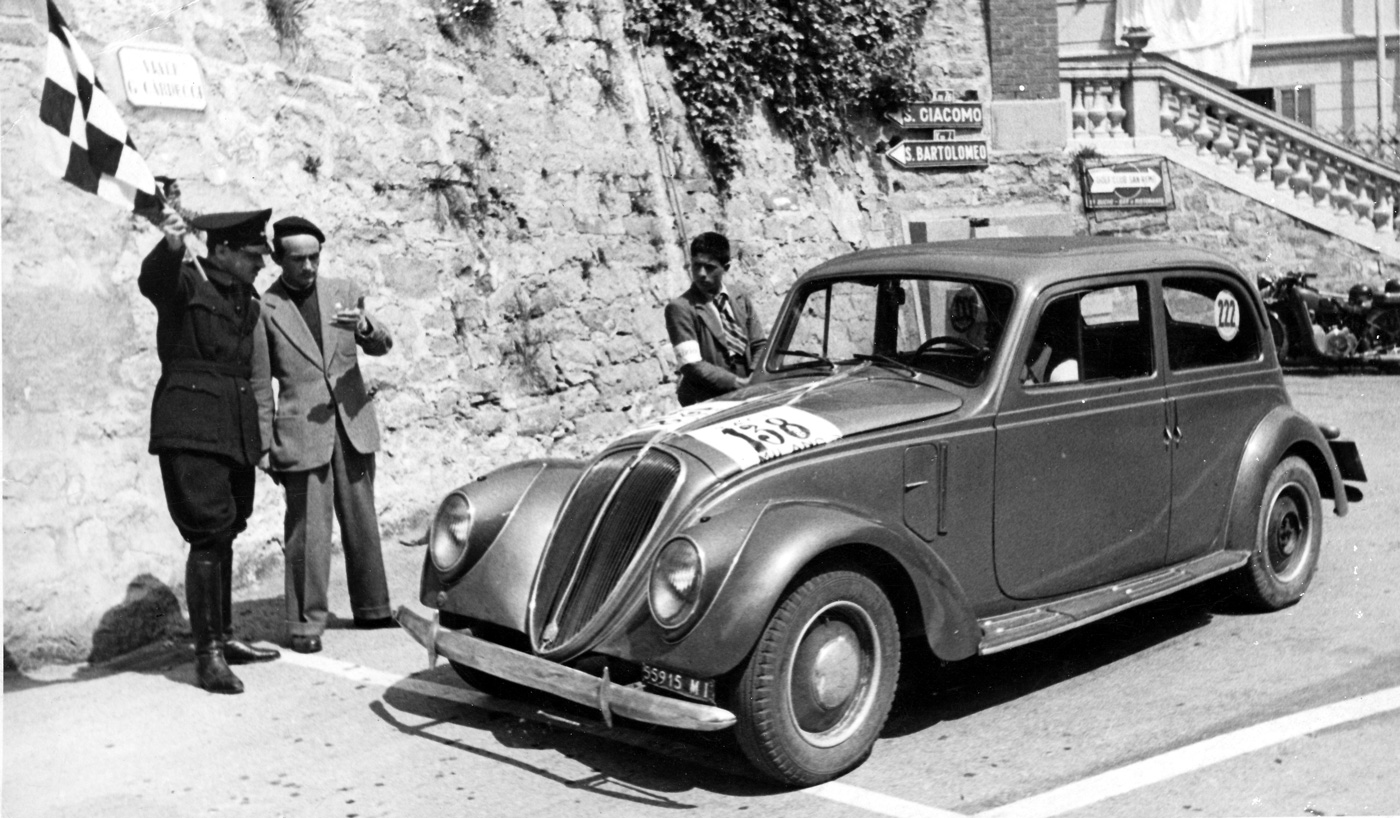
Franco Martinengo lines up for the start of the San Bartolemeo hill climb in 1937 with his brand new Fiat 1500. Note the starter wearing the fascist uniform.
When, in 1940, the 1500 was modified with an alligator hood and a more pronounced V-shaped grille, Martinengo was one of the first customers. It was with this car that he competed in his first Mille Miglia in 1940 (otherwise known as the 1st GP di Brescia as it was run on a much shortened course but still based in Brescia). Being the gentleman driver he was, Martinengo always wore an English-style sports coat, white shirt and tie when he raced. Very early on after the War, Franco was into what we today call the pop music industry. He was chief executive of Durium Records, one of the leading Italian makers of vinyl discs. They had world-wide distribution for their discs being linked with Decca in the UK and one of their great stars was the jazz trumpeter Nini Rosso.
However, the lure of motor sport was strong, and he and some of his friends began to spend Saturdays at Monza, where they would rent the circuit and have a blast. Son Cesare, who was very young at the time, remembers those days. “…Here in Italy all the kids and adults used to spend Saturdays playing football, but we used to go to Monza instead. It was the regular weekend pastime and I have many happy memories going round the circuit with my dad. By this time he had met up with Elio Zagato, who was a few years younger than him. In fact Elio and my father had similar Fiat 1100 Zagatos and raced together”.
Tall and bespectacled like Franco Martinengo, Elio Zagato not only displayed great talent as a racing driver but in his early days working with his father Ugo, he clearly had his own ideas not only on styling, but on how the company could progress in the future. Indeed, he might have been a better known racing driver had he been able to concentrate more on his racing, but it was the spirit and future of Zagato that made him concentrate more on work than on play. His first serious car was the Fiat 750cc spider built by Casa dell’Auto but modified with cycle wings by Ugo Zagato.
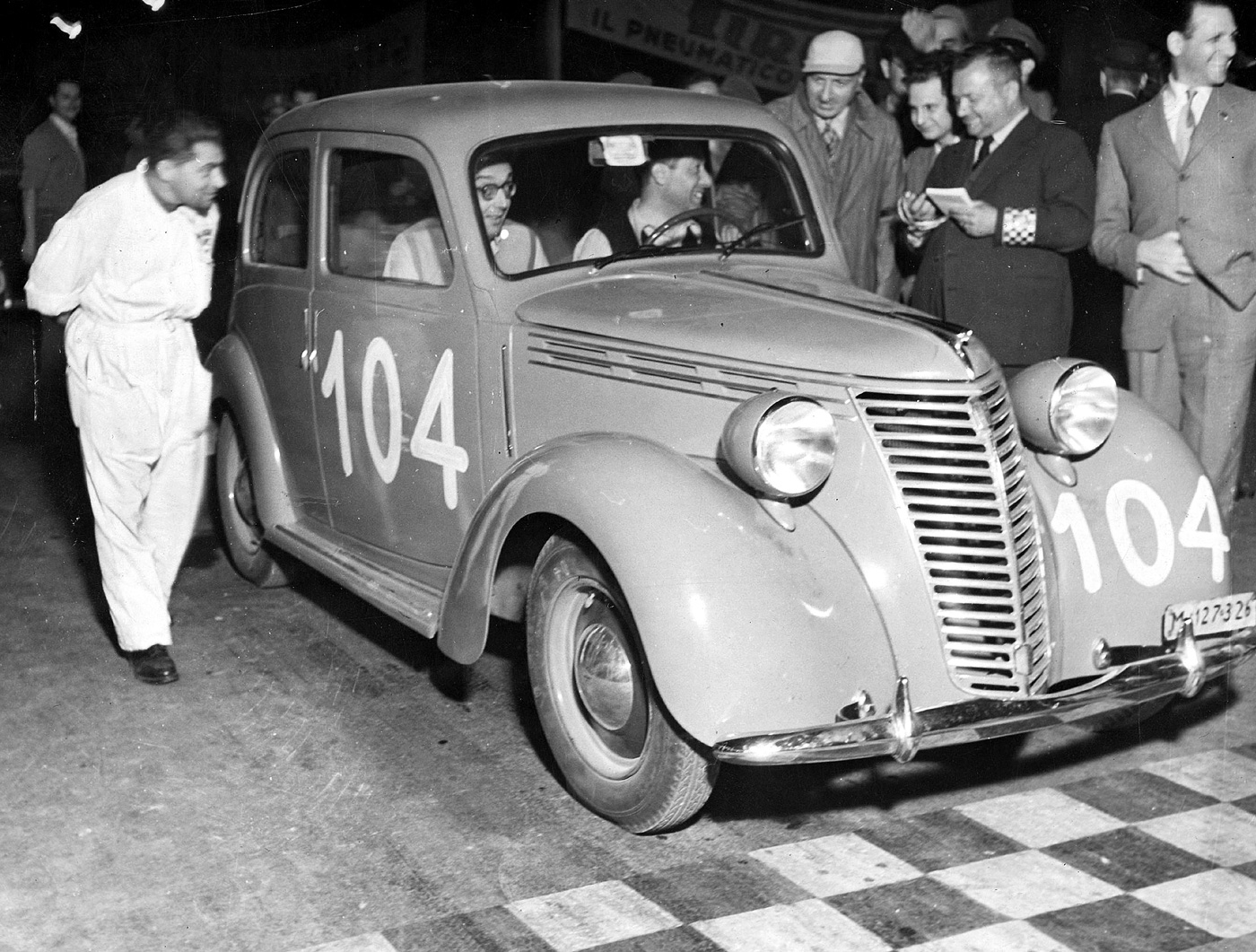
Martinengo photographed ten years later in 1947 with his second series Fiat 1500. Note the coachwork differences at the front.
However, the 1953 Fiat 1100 Zagato berlinetta was the car that caught Franco Martinengo’s eye. He and Elio Zagato raced identical berlinettas, often finishing first and second in their class. The engines for both cars were being prepared by a Milanese garage owner named Piero Facetti. Those who followed International racing in the 1960s onward will be familiar with Piero’s son Carlo Facetti, who developed the twin turbo Group C Ferrari that ran at Daytona in 1981. With their matching Zagato Berlinettas, the two friends were always well placed in events like the Stella Alpina and the Giro de Sicilia.
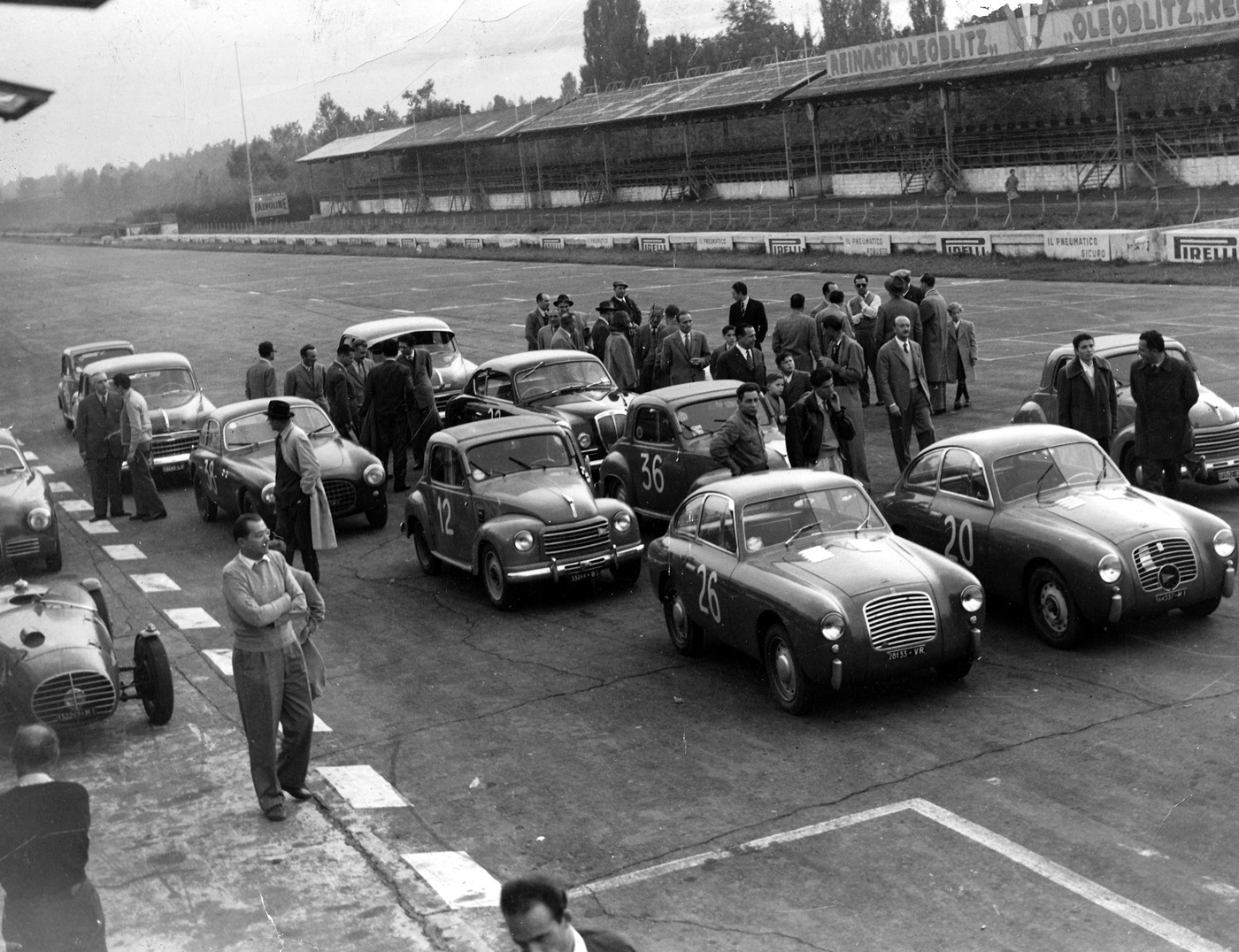
Happy days at Monza: Franco Martinengo and Elio Zagato with some of their friends on a fun Saturday in the early 1950s.
In 1947 the main income for Zagato came from building and designing truck bodies, but Elio saw the potential in special bodies for production road cars. This started around 1949 with a special bodied Fiat 500 and soon the market for their Zagato bodied Fiats, Lancias and Alfa Romeos were bringing in more income than the trucks. Elio Zagato was at his creative best. A typical example came with the introduction of the Fiat 8V in 1952. Martinengo bought a production one, but Zagato transformed his into one of the most attractive Berlinettas. Elio won the Coppa Inter Europa with this car.
In 1951 the group of friends decided to form their own racing team, and took for their title Scuderia Sant Ambroeus, named after the patron saint of Milan. The idea behind the team came from Eugenio Dragoni. He was not only the one to lead the team into helping promising new young Italian race drivers, but eventually became team manager of Scuderia Ferrari.
Dragoni came from a family that produced cosmetics. He soon roped in Elio Zagato, Franco Martinengo, Italian bob-sleigh rider Alberto della Beffa and Alessandro Zafferri as the original founders of the team; they all ran their own cars. Zafferri, for example, raced an Alfa Romeo 1900 and Beffa had a Giulietta SZ amongst other cars. Originally the team was an extension of their early “club days” at Monza, but later they were instrumental in bringing on some new Italian drivers like Bruno Deserti, Corrado Manfredini and of course, Giancarlo Baghetti. Indeed, the persuasive Dragoni got Enzo Ferrari to loan them a 156 Dino Grand Prix car to give Giancarlo Baghetti and he immediately went out and won three races in a row, including the World Championship French Grand Prix at Reims.
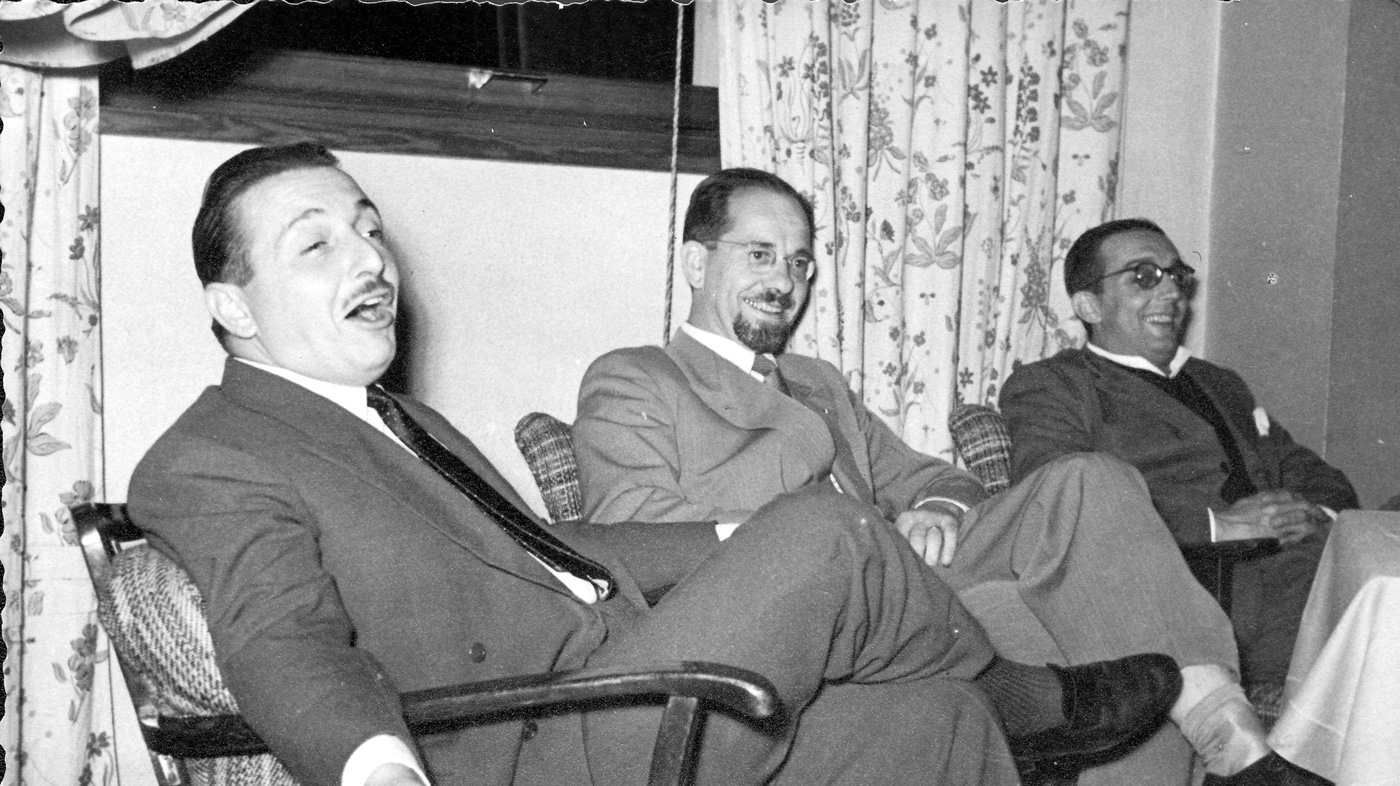
Three of the founders of Scuderia Sant Ambroeus, left to right; Allesandro Zafferri, Alberto Dela Beffa and Franco Martinengo.
In the 1953 Mille Miglia Martinengo was loaned a factory Alfa Romeo Zagato and he finished 29th overall, his highest placing in the Mille Miglia from 1940 to 1957. The last car he raced was his Lancia Aurelia B24 “America”.
Meanwhile, Franco’s son Cesare was growing up steeped in motor sport. At the age of 18 he got his hands on one of the new Fiat 500s and went to Monza. There he met another young enthusiast a year older than him, Gianpiero Moretti, whose family had a pharmaceutical company. Gianpiero also had a Fiat 500 and they became close friends. Two years later, after qualifying at the University, Gianpiero told his friend Cesare Martinengo that he had a problem. He didn’t like the steering wheel on his new car. As Cesare recalls: “We bought a piece of aluminum and took it to Giorgio Pianta’s garage on the via Matilda Serano in Milan. Gianpiero showed the mechanics a drawing he had made of the type of steering wheel he wanted, and they cut out the shape which included some holes on the spoke so make it lighter. We then went to a carpenter in Galerie Lombardia and asked him to make a wooden rim for it which was 35 cms wide rather than 38 or 39cms. However, Gianpiero found the wood was too slippery and so he had a leather cover stitched on to the wood rim and mounted it in his car. Little did he know that we all thought his steering wheel was a great idea and so he made me a replica for my go-kart and then one for Giorgio Piantya and one for Mario Aquati who not only raced but owned Linea Sport. Mario was later to become a Momo dealer.
“Gianpiero realised that he could have a business here and so he rented a room in a hairdressers shop and with some girls they started to produce steering wheels. When it came to a name for the company he chose Momo for Moretti/Monza and the rest is history”.
Cesare explained that Gianpiero had asked him to join him but Cesare felt that his job as a journalist had more prospects! However, Cesare eventually did join the Momo Corporation in 1978 as Export Manager. Cesare had followed his father’s footsteps and raced a bubble top Fiat Abarth Zagato but he stopped when he became a journalist. He tells an amusing story of how he had supplied a photo to an Italian magazine he had taken at the U.S. Grand Prix at Watkins Glen of the dashboard of Lorenzo Bandini’s Ferrari. The photo caused a few problems between Bandini and Enzo Ferrari as to the reason why he had retired. The photo showed the rev-counter tell-tale showing 11,000 rpm which was far more than he was supposed to have used.
After 22 years with Momo, selling steering wheels to some of the leading Grand Prix and sports car teams as well as to Ferrari as original equipment on some of their models, Cesare retired to his flat in Milan which just happens to overlook the Momo facility.
When Gianpiero Moretti died last February 14 at the age of 71 he was saddened. “….Gianpiero had been one of my very best friends and was one of the many drivers for Scuderia Sant’ Ambroeus and he was a great ambassador of his company not only in the United States where he stayed for much of his life but within the motor racing community”.
One senses that Cesare Martinengo would like to see a return to the rather happy and carefree days of motor racing in the 1950s when you joined your friends in friendly rivalry on the track and boisterous parties afterwards.

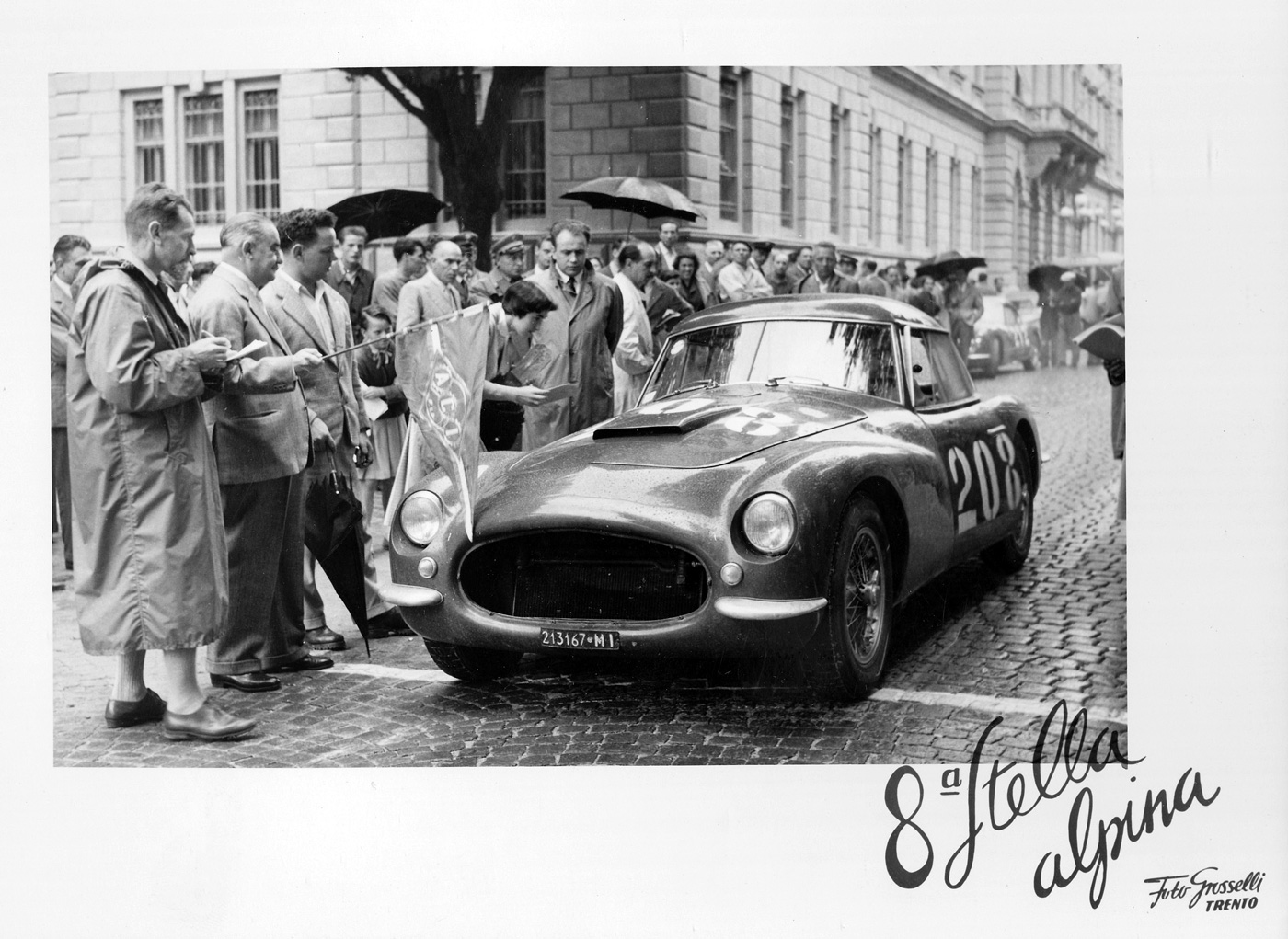
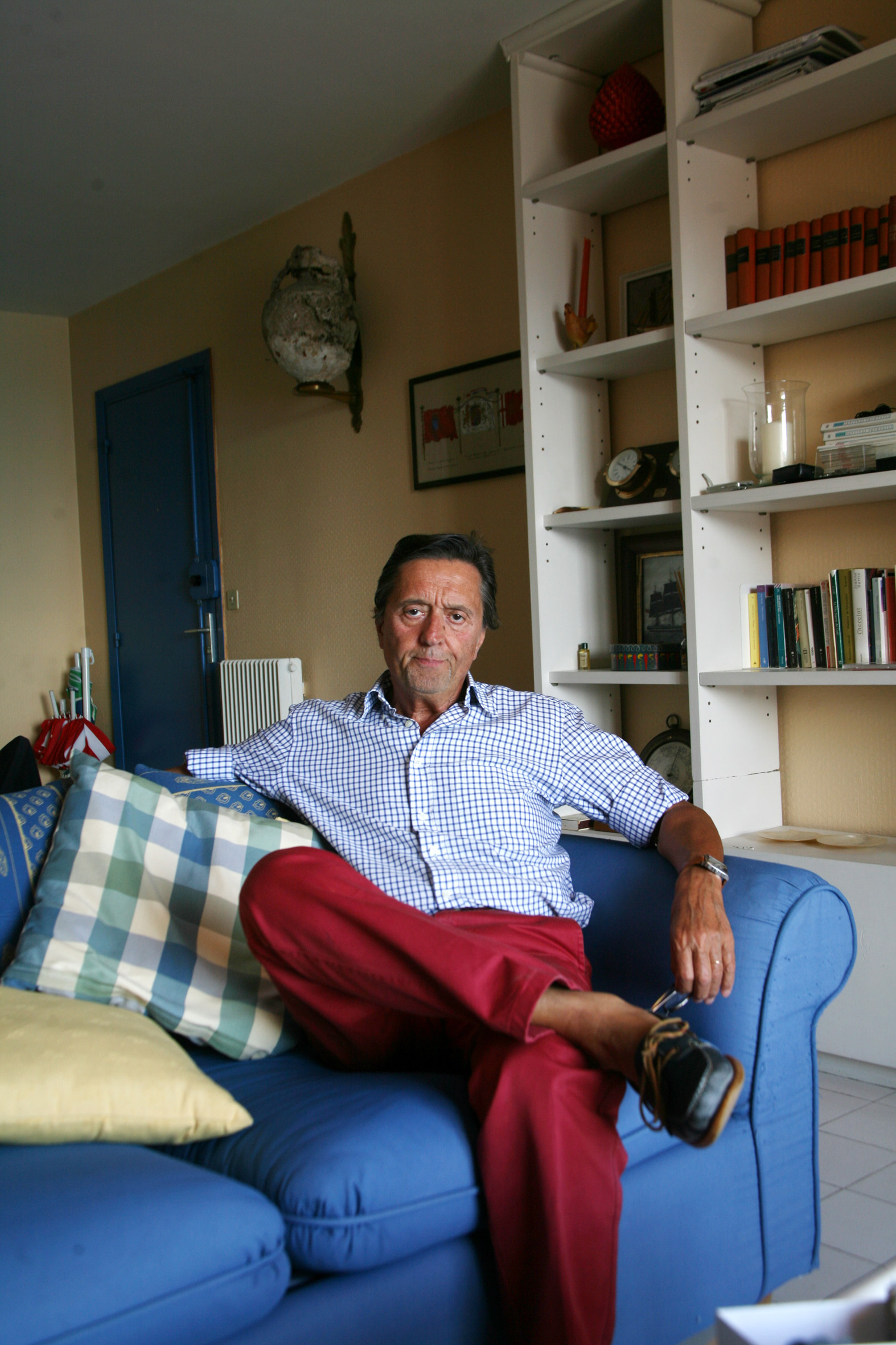
Very interesting article. The relationships that surrounds Facetti as a race mechanic should be its own story. Facetti still has a shop and is doing business at 85 years old.
I will visit him in the next thirty day upon his return from Holiday.
Fascinating story and so well told. Today’s motorsporting journalists have a lot to learn from the likes of GG.
This from Graham Gauld:
Thank you for your kind remarks. I think the Internet with all it’s blind alleys make it easy to write ” history” but you need to do much more hard work in order to attempt to sort the wheat from the chaff and also a lot of experience along the way. I have cuttings from learned writers going back over sixty years long before the Internet and that helps too. There is a difference between an article and a story. Thanks again, Graham